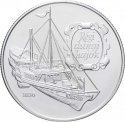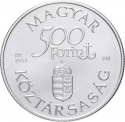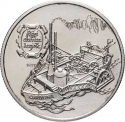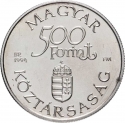You are about to finish your registration. Please check your mailbox (including spam folder). There should be a letter with a confirmation link. Check setting to make sure that your e-mail address is correct.
Send letter againDescription
Constructed in 1867 by Count Ödön Széchenyi, the paddle-wheel river luxury steamship "Hableány" voyaged from Budapest to Paris, garnering attention at the 1867 Paris World Exhibition. Adolf Höcher devised the yacht's plans, and after extensive preparation, the count ordered its construction at the Hartmann József shipyard in Újpest. Designed with just 6 horsepower intentionally for the exhibition, it caught the eye of Jules Verne upon its arrival in Paris, inspiring his novel "The Danube Navigator." Sold to French photographer Nadar after the exhibition, it later served as a warship during the Franco-Prussian War and ultimately sank in 1874 due to a boiler explosion while operating as a passenger ship on the Rhine under Prussian control.
Engraver: Mihály Fritz
Obverse

|
Depicts the inaugural Hungarian Danube steamboat, the "HABLEÁNY." Positioned near the left side of the ship are the visible details of its launch year and name. Positioned at the top left corner is an ornate frame displaying the title of the coin series, "Old Danube Ships," presented in three lines. Régi |
|---|---|
Reverse

|
Depicts at the center the coat of arms of the Republic of Hungary, below which is the denomination. The last letter of the word "FORINT" is depicted in the shape of an anchor. Aligned with the inscription, on the left side, the mintmark "BP" is positioned, beneath which is the year of issue, and on the same line, on the right side, are the initials "FM" representing the designer's name. MAGYAR |
| Edge |
1000 Forint
Third Republic
Old Danube Ships
Hableány
Subscribe series
KM# 714 Schön# 219 Adamo# EM139
Old Danube Ships
Hableány





